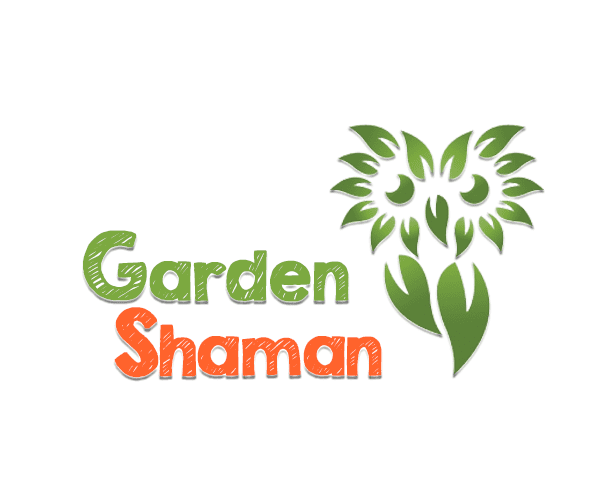- The right preparation for winter vegetables
- Suitable vegetables for December and January
- Professional cultivation techniques
- Protection against winter damage
- Concluding thoughts and summary
You can find many of our vegetables and herbs here!
Do you think growing vegetables is only an activity for spring and summer?
In fact, you can harvest fresh winter vegetables even in the coldest months of the year. While your neighbors prepare their gardens for winter, you have the chance to bring crunchy vegetables straight from your garden to the table.
Growing winter vegetables is not rocket science - you just need the right knowledge and a few tried and tested techniques. Whether in a classic vegetable patch or a protected raised bed, the possibilities are endless.
In this article, you will learn step by step how to grow vegetables successfully even in the cold season. From the right soil preparation to effective frost protection - we show you all the important aspects for a successful winter harvest. Let's get started!
1. the right preparation for winter vegetables
Successful preparation for your winter vegetables begins long before the first frosts arrive. With the right planning and equipment, you can reap a rich harvest even in the cold season.
Optimum soil preparation in winter
Healthy soil is the foundation for your winter vegetables. Loosen the soil deeply and enrich it with mature compost to ensure the nutrient supply. For an optimal soil structure, you should follow these steps:
- Remove old plant debris
- Loosen the soil deeply
- Work in compost
- Finely chop the surface
- Apply a layer of mulch if necessary
Important tools and materials
You need solid basic equipment for conservatory maintenance. The most important tools are Spade, hoe and rake. A sharp hoe is particularly important for weed control and closing cracks in the ground. Complete your equipment with a Planting shovela Knife and one Garden shears for smaller jobs.
Temperature management in the garden
There are various ways to protect your plants from the winter cold. A raised bed already offers a natural warmth advantage due to its design. Cover your plants with fleece or other protective materials at temperatures around +5°C. Suitable for additional protection:
- Mulch layers from leaves or straw
- Breathable nonwovens made from jute or hemp
- Cold frame attachments for raised beds
Make sure that the cover is well ventilated to prevent mold growth.
2. suitable vegetables for December and January
Now that you've prepared your garden, it's time to choose the right vegetables for the winter months. The good news is that there is a surprising variety of vegetables that can withstand the winter cold.
Frost-hardy vegetables
Some vegetables are true winter heroes. Kale, Brussels sprouts and Lamb's lettuce can easily withstand temperatures down to minus ten degrees. Particularly robust are Winter onions, Winter garlic, Jerusalem artichoke and Black salsify - they can remain in the bed throughout the winter.
Fast-growing winter vegetables
Depending on the speed of growth, we distinguish between three categories:
| Growing time | Vegetable varieties |
|---|---|
| Fast (40-50 days) | Spinach, lamb's lettuce, winter purslane |
| Medium (55-70 days) | Butter cabbage, kale, Chinese cabbage |
| Slow (100 days) | Brussels sprouts, Jerusalem artichokes, beet |
Storable varieties
They are particularly suitable for winter storage:
- Root and tuber vegetablesCarrots, radishes, rutabagas and beet - they stay fresh at temperatures between two and eight degrees Celsius in an earthen dug-out
- CabbagesRed and white cabbage - choose late-ripening varieties as they keep longer
- PumpkinsThey require temperatures above ten degrees and are perfect for storage in wooden crates
Important: When storing vegetables, make sure that they are fully ripe, healthy and undamaged. For optimum storage conditions, you should always store fruit and vegetables separately, as the ethylene released by fruit can shorten the shelf life of vegetables.
3. professional cultivation techniques
With the right know-how, you can grow winter vegetables successfully even in the cold season. Here you will learn the most important professional techniques for optimum results.
Sowing and planting in winter
The right time is crucial for a successful winter harvest. Slow-growing varieties such as Brussels sprouts and root vegetables take about 100 days to reach harvest maturity. Fast-growing varieties like lamb's lettuce only need 40-50 days.
Follow these steps for successful winter sowing:
- Sow between July and September
- Choose a sheltered, sunny location
- Maintain row spacing of at least 15 cm
- Prepare a false seedbed
- Cover with fleece if necessary
Correct watering during frost
Watering in winter requires special attention. One Uniform water application is essential for successful winter cultivation.
Watering guidelines for the winter:
| Location | Frequency | Special features |
|---|---|---|
| Open land | 2x monthly | Only in dry weather |
| Greenhouse | 1x weekly | According to soil moisture |
| Raised bed | As required | Water in the morning |
Nutrient supply in the cold season
In winter, the plants' metabolism slows down, allowing sugar and other aromatic substances to accumulate in leaves, beets and tubers. For an optimal supply of nutrients:
- Use nutrient-rich, well-drained soil
- Work in mature compost before planting
- Pay attention to a Even moisture distribution
- Mulch with straw or leaves for additional protection
For frost protection irrigation, particular attention must be paid to the Uniformity of water application must be observed. The water should be distributed evenly over the area so that the crops are protected by the energy released during freezing.
4. protection against winter damage
Winter poses particular challenges for your vegetables. However, with the right protective measures, you can ensure a rich harvest even in the cold season.
Effective frost protection measures
Winter precipitation has increased by around 25% since 1965, which places new demands on frost protection. You can combine different methods for optimum protection of your plants:
| Protection method | Temperature protection | Special features |
|---|---|---|
| Garden fleece | 2-3°C | Permeable to water |
| Film tunnel | 4-5°C | Well ventilated |
| Cold frame | 5-7°C | Utilizing solar heat |
| Greenhouse | 8-10°C | Maximum protection |
Pest control in winter
The most effective and cheapest method of pest control is the colonization of beneficial insects. Encourage natural helpers in your garden:
- Create hiding places for ladybugs and earwigs
- Install insect hotels for overwintering beneficial insects
- Planted mixed crops for natural pest defense
Disease prevention in wet conditions
A healthy plant with a sufficient supply of nutrients is less susceptible to disease. Observe the following preventive measures:
- Water only in the early morning so that the leaves can dry out during the day
- Keep sufficient planting distance for good air circulation
- Avoid waterlogging by regularly checking the soil
- Remove diseased plant parts immediately
5 Concluding thoughts and summary
Your winter vegetables not only need protection from the cold, but especially from too much moisture. Ensure good drainage and check the protective devices regularly. Use natural tonics such as nettle slurry or horsetail tea to increase the resistance of your plants.
ImportantCheck your bed regularly for pest infestation and signs of disease. This will allow you to react in good time and take appropriate countermeasures. When using protective fleece or foil, pay particular attention to sufficient ventilation to prevent fungal infestation.
Further questions and answers
Q1. Which vegetables are particularly suitable for growing in winter? Frost-hardy varieties such as kale, Brussels sprouts, lamb's lettuce, winter onions, winter leeks, Jerusalem artichokes and black salsify are ideal for winter cultivation. They can withstand temperatures down to minus ten degrees and can remain in the bed throughout the winter.
Q2. When is the best time to sow winter vegetables? The best time to sow winter vegetables is between July and September. Slow-growing varieties such as Brussels sprouts need around 100 days to reach harvest maturity, while fast-growing varieties such as lamb's lettuce only need 40-50 days.
Q3. How do I protect my winter vegetables from frost? There are various effective frost protection measures. Garden fleece offers 2-3°C protection, foil tunnels 4-5°C, cold frames 5-7°C and greenhouses 8-10°C. Mulch layers of leaves or straw can also be used. It is important to ensure that the cover is well ventilated to prevent mold growth.
Q4. How do I water my winter vegetables properly? Watering in winter requires special attention. Outdoors, water about twice a month in dry conditions, in the greenhouse once a week depending on soil moisture. In raised beds, water as required, preferably in the morning. It is particularly important to distribute the water evenly.
Q5. What nutrients do winter vegetables need? Winter vegetables need a balanced supply of nutrients. Use nutrient-rich, well-drained soil and work in mature compost before planting. An even distribution of moisture is important. In winter, the plants' metabolism slows down, causing sugar and other aromatic substances to accumulate in leaves, beets and tubers.












